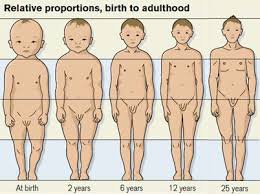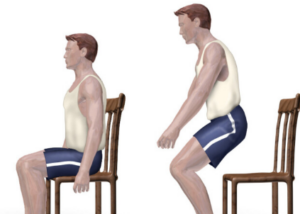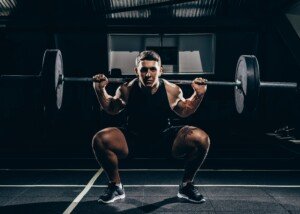Adults who can’t get parallel with a squat, let alone deep, must realize that one reason children squat so easily is body proportions.
Google “children squatting” and hit “images” and you’ll see toddlers in a very comfortable looking squat position, which makes adults envious who struggle or find it impossible to get into even a parallel position.
Look at the femur length of the toddler above, and compare it to his torso.
What do young children have, as far as natural squatting skills, that adults lack?
Just why IS it easier for children to squat than it is for adults?
If you’re seething with jealousy, it will be of some consolation to know that a lot of this has to do with the length of a child from head to hip, relative to their legs.
Anyone who’s been in the news loop only halfway has certainly read at least one story of a toddler drowning — as a result of tipping headfirst into a bucket of water or a toilet bowl.
The news article goes on to warn parents about this danger because toddlers are top-heavy.

Shutterstock/Nym_Pleydell
A report from the U.S. Consumer Product Safety Commission states that between 1996 and 1999, 58 children under age 5 were reported to have drowned in five-gallon water buckets.
The CPSC report says that “…the stability of these buckets, makes it nearly impossible for top-heavy infants and toddlers to free themselves when they fall into the bucket headfirst.”
Toddlers have also fallen into toilets with tragic outcomes; the CPSC report adds, “The typical scenario involves a child under 3-years-old falling headfirst into the toilet.”
Bottom line: Young children are top-heavy.
This top-heaviness makes it easy for young children to do a full squat and maintain the position.

Shutterstock/savageultralight

Dreamstime/Pavel Losevsky
When adults do back squats with free barbells, the objective is to get the bar aligned vertically with the ankle/midfoot to keep balance.
Those with short torsos will have to lean forward more to do this, making the squat more difficult.
Long femurs add to the problem because the long thigh bones push the hips back, which in turn requires more leaning forward to get the bar over the mid foot.
If a person has a long torso, they don’t have to lean very far forward to align the bar with the foot.
A short legged (especially short-femur) adult with a long torso is a natural squatter; the long upper body lever allows them to stay closer to upright all the way into a deep squat.
So how does this relate to young children easily full squatting?
At birth, the head is one-fourth a baby’s height. In an adult, the head is about one-eighth the body height. This is Physics 101.

A toddler’s head is a big segment of their overall body length, and acts as opposition to the forces that want to pull the body backwards when in a squat.
Think of the young child’s head as the barbell in an overhead squat!
Adults who have difficulty with the parallel back squat will find that the overhead squat is easier, because the positioning of the barbell adds “length” to the upper body, increasing the lever arm, thus reducing the need to lean forward to align the bar with the feet!
A young child’s relatively big head is a built-in overhead bar! Any profile shot of a toddler or preschooler squatting clearly shows this.
In most adults, the head plus trunk make up about one-half the total height. In a baby, the head plus trunk make up five-eighths.
Though five-eighths is only slightly more than four-eighths (which is one-half), this slight difference is more than enough to yield a huge biomechanical advantage in full squatting! As children grow, these proportions shift.
Earlier I pointed out that an adult’s head is one-eighth their height, and a baby’s head is one-fourth.
For children 6.75 years, the head is between one-fifth and one-sixth their body height.
For an adult to have the squatting ease of young children, his head would have to be around one-fifth his height, with head plus trunk being five-eighths total height. You wouldn’t want to look this way.
To better understand the physics, imagine a toddler bending over, like an adult, to pick something off the floor. What would happen? They’d likely pitch headfirst into the floor.
Many other factors influence the ability to squat full and even parallel, including squatting facets, which are bone structures of the talus (ankle bone) and tibia (shin bone) that are adapted to squatting.
As Western peoples get older and eliminate squatting, the facets disappear.
Children are natural squatters, but the vast majority of Western children will lose this as adults.
 Lorra Garrick is a former personal trainer certified through the American Council on Exercise. At Bally Total Fitness she trained women and men of all ages for fat loss, muscle building, fitness and improved health.
Lorra Garrick is a former personal trainer certified through the American Council on Exercise. At Bally Total Fitness she trained women and men of all ages for fat loss, muscle building, fitness and improved health.



























